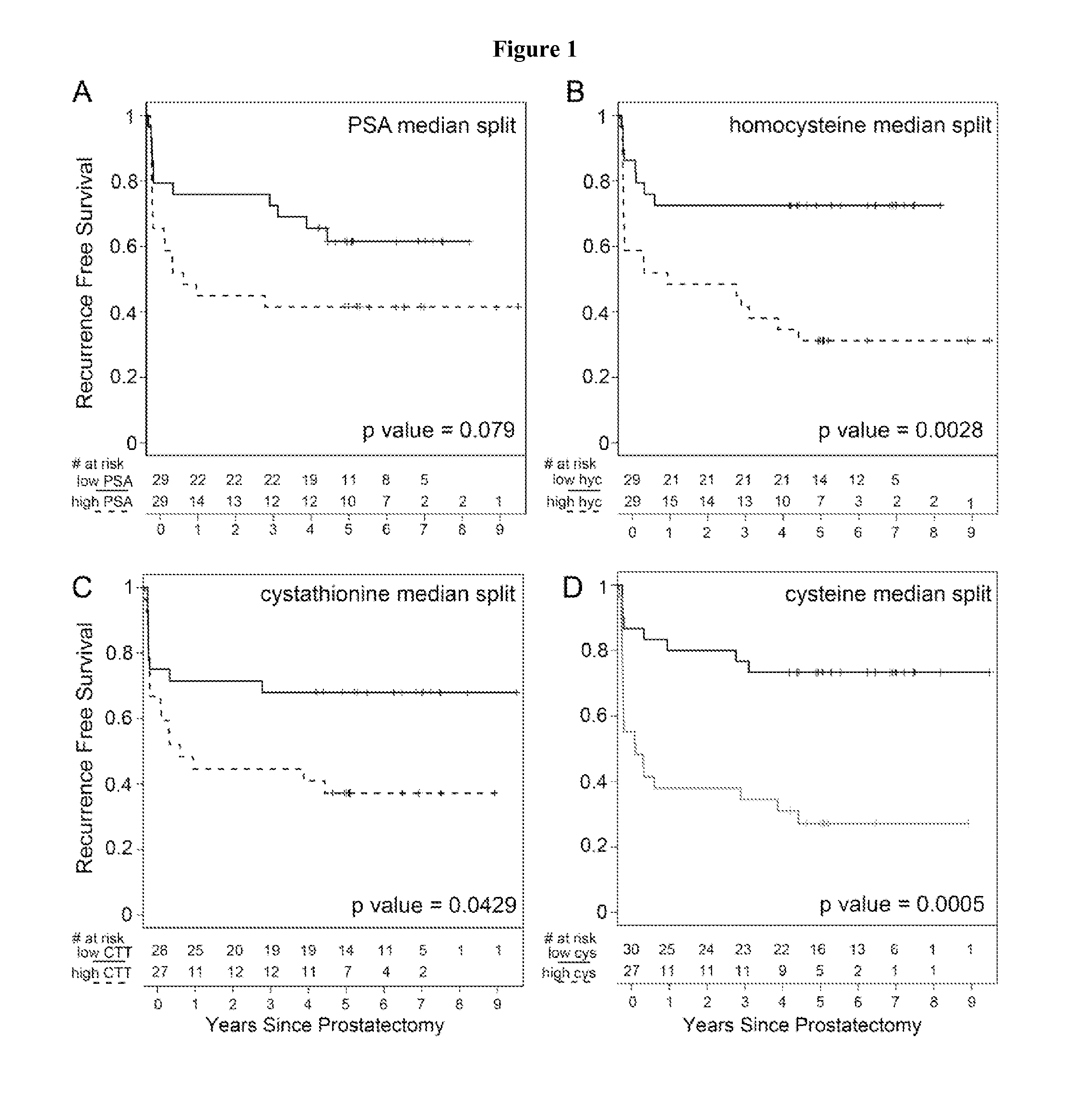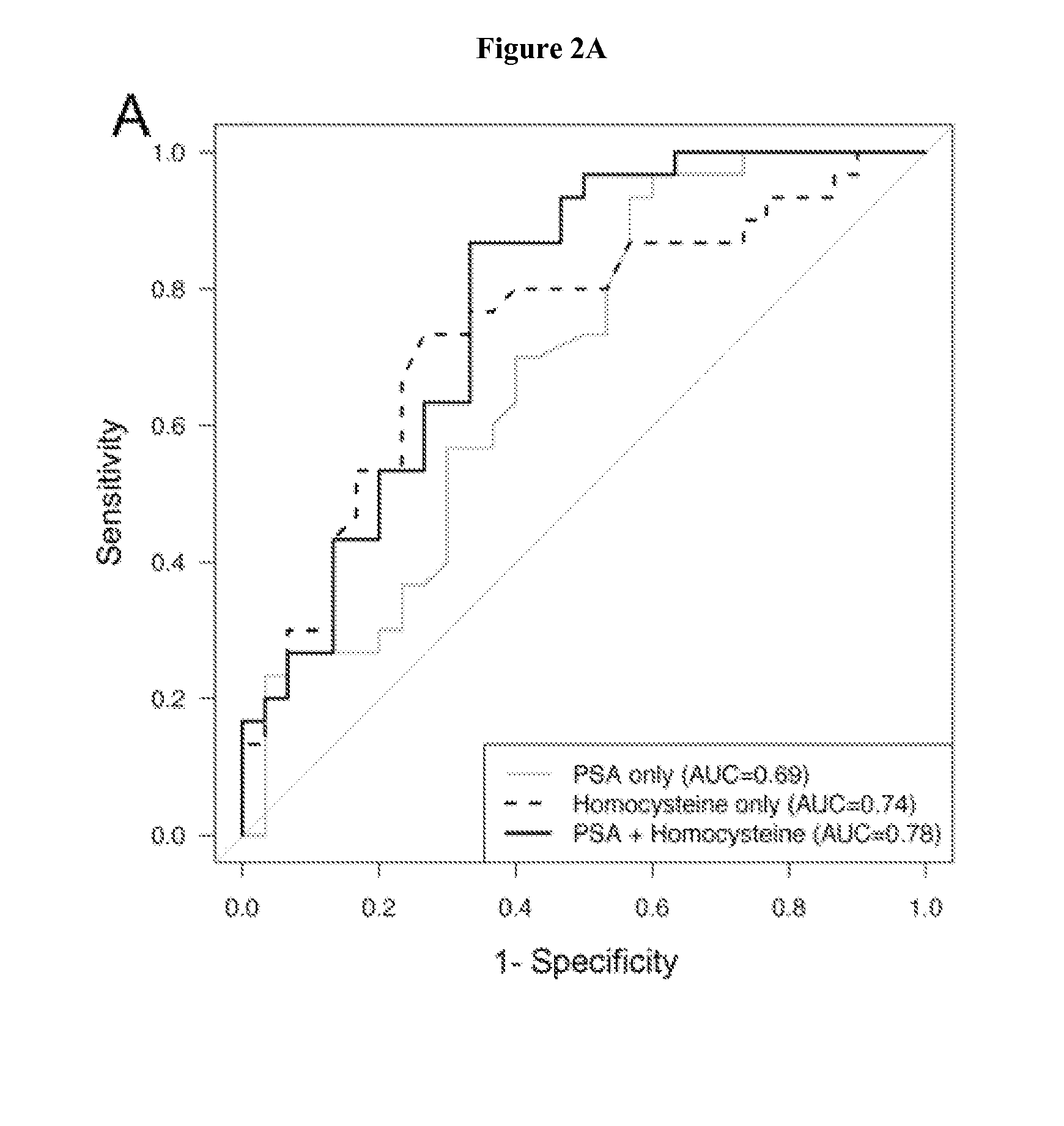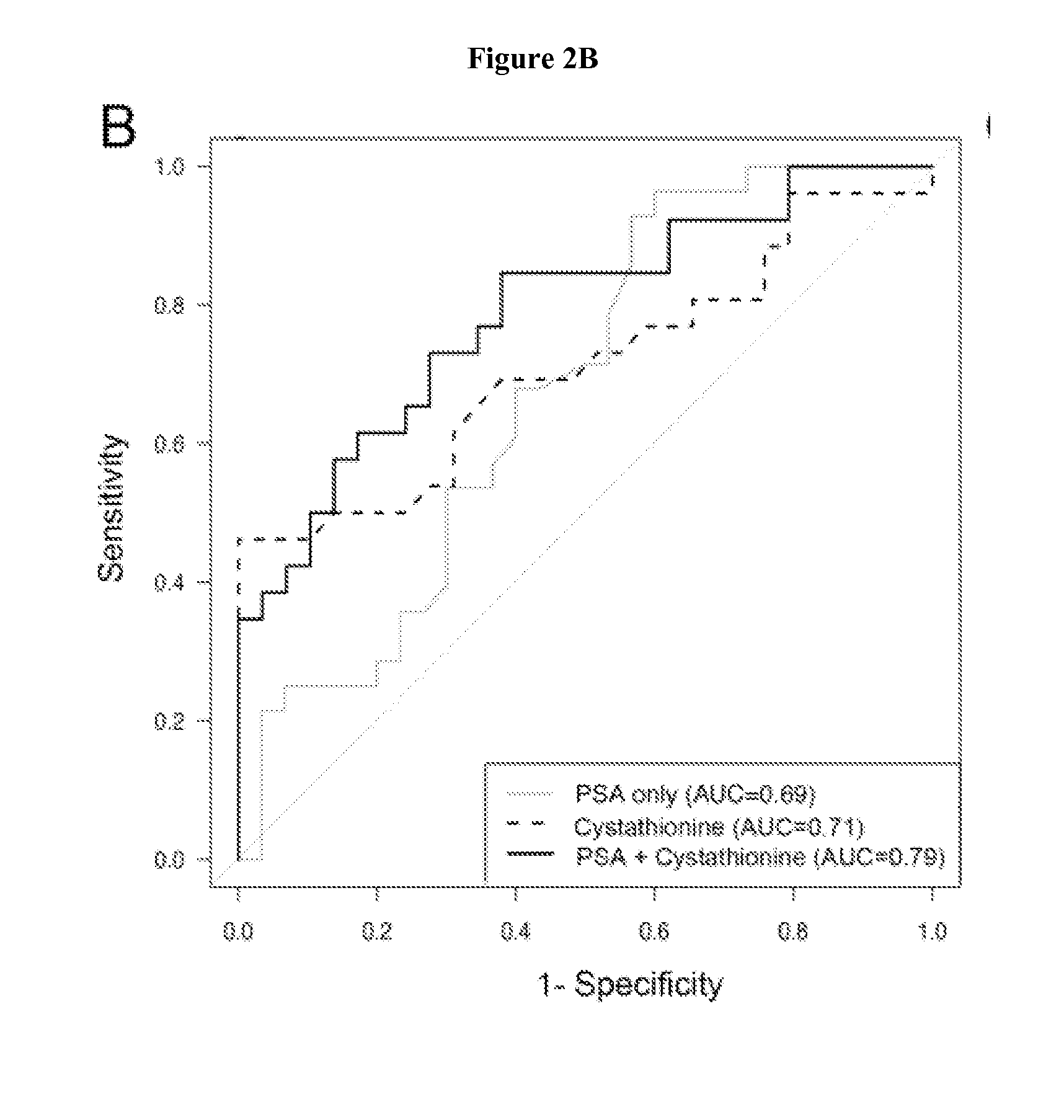Methionine metabolites predict aggressive cancer progression
a technology of methionine metabolites and aggressive cancer, applied in the field of urology, oncology and pathology, can solve the problems of aggressive disease, high risk, even at elevated risk of early recurrence, etc., and achieve the effects of increasing the probability of cancer recurren
- Summary
- Abstract
- Description
- Claims
- Application Information
AI Technical Summary
Benefits of technology
Problems solved by technology
Method used
Image
Examples
example 1
[0053]Urine and serum samples (n=54 and 58, respectively), collected at the time of prostatectomy were divided into subjects who developed biochemical recurrence within 2 years and those who remained recurrence-free after 5 years. Multiple methionine metabolites were measured in urine and serum by GC-MS. The role of serum metabolites and clinical variables (biopsy Gleason grade, clinical stage, serum prostate specific antigen [PSA]) on biochemical recurrence prediction were evaluated. Urinary sarcosine and cysteine levels were significantly higher (p=0.03 and p=0.007 respectively) in the recurrent group. However, in serum, concentrations of homocysteine (p=0.003), cystathionine (p=0.007) and cysteine (p<0.001) were more abundant in the recurrent population. The inclusion of serum cysteine to a model with PSA and biopsy Gleason grade improved prediction over the clinical variables alone (p<0.001).
[0054]Higher serum homocysteine, cystathionine, and cysteine concentrations independentl...
example 2
A. Ethics Statement.
[0055]This nested case-control study was conducted in accordance with the Institutional Review Board of Vanderbilt University. Written consent was given by the patients for their information to be stored in the hospital database. The board specifically approved the research use of the di-identified information and “on the shelf” specimens to be used for research under a waiver of consent.
B. Patient Selection
[0056]The digital medical records of 400 subjects were retrospectively examined using the Vanderbilt University Department of Urologic Surgery registry of radical prostatectomies performed between 2003 and 2007. Several patients were excluded for reasons of compromised renal, heart, or liver function as was determined by electronic records of elevated urinary creatinine, hypertension, cardiac infarction history, and blood markers for hepatic function. Additionally, availability of follow-up data and records of pre-surgical hormone-ablation therapy were reasons...
example 3
[0063]Methionine metabolites support prediction of biochemical recurrence—Urine metabolites were initially measured in fifty-four patients who developed biochemical recurrence (N=25) and those that remained recurrence-free (N=29). These patients were matched for age and pre-surgical serum PSA. Table 1 enumerates the clinical characteristics of the two patient groups by serum PSA, clinical stage, and biopsy Gleason grade. Majority of patients had a clinical stage of T1. Creatinine-normalized urinary dimethylglycine and homocysteine were not significantly different between the two groups. However, we found urinary sarcosine to be significantly elevated at the time of surgery in patients who developed biochemical recurrence, as originally reported for patients with frank prostate metastatic lesions [8]. We further found that urinary cysteine was significantly elevated in biochemically-recurrent patients compared to those who remained recurrence-free five years following prostatectomy. ...
PUM
| Property | Measurement | Unit |
|---|---|---|
| path length | aaaaa | aaaaa |
| PSA | aaaaa | aaaaa |
| velocity | aaaaa | aaaaa |
Abstract
Description
Claims
Application Information
 Login to View More
Login to View More - R&D
- Intellectual Property
- Life Sciences
- Materials
- Tech Scout
- Unparalleled Data Quality
- Higher Quality Content
- 60% Fewer Hallucinations
Browse by: Latest US Patents, China's latest patents, Technical Efficacy Thesaurus, Application Domain, Technology Topic, Popular Technical Reports.
© 2025 PatSnap. All rights reserved.Legal|Privacy policy|Modern Slavery Act Transparency Statement|Sitemap|About US| Contact US: help@patsnap.com



